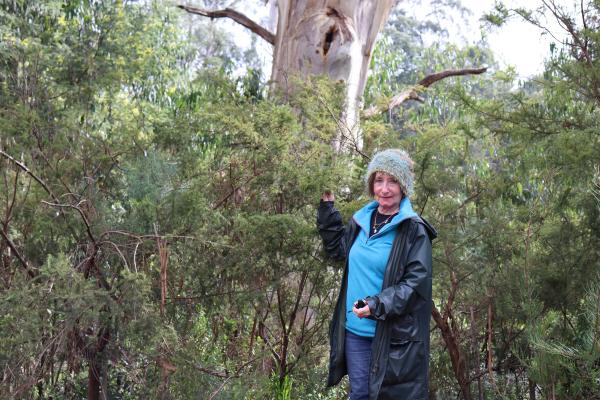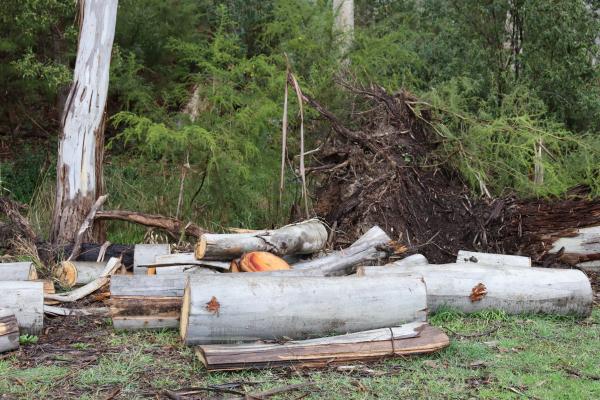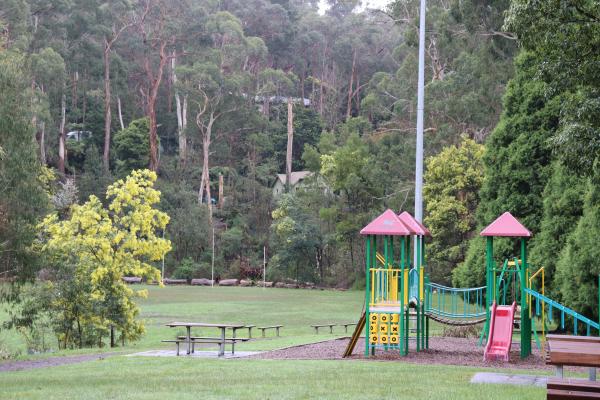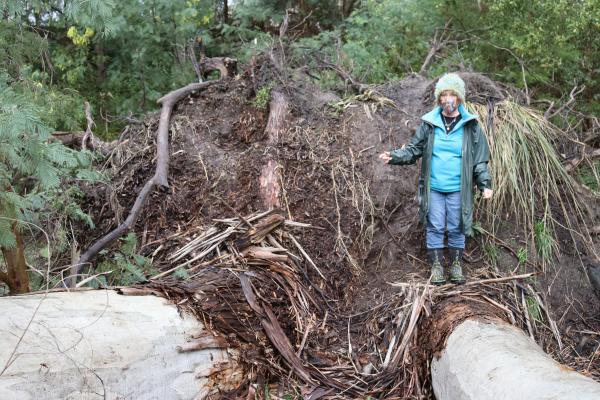
By Mikayla van Loon
The impacts of the storm that happened in June are far from being over and the devastation will be felt for years to come, particularly in our natural environments.
The Mount Evelyn Environment Protection and Progress Association (MEEPPA) are now assessing the damage around the Mount Evelyn Recreation Reserve and have been consulting with Melbourne Water to start replacing lost vegetation.
MEEPPA’s president Clare Worsnop said although they can start replacing trees and shrubs, the trees that have fallen around the reserve are not going to grow back overnight.
Most of the big white gums in the reserve are manna gums which need deep soil because they are so large and solid. They can grow up to 50 metres high and take about 200 years before they start making hollows for wildlife.
“So that’s why these big forest giants are so important because they provide hollows for everything from spiders and bats to kookaburras to all the parrots to all the tree dwelling creatures, the possums, the gliders, and all the powerful owls and their friends as well,” Ms Worsnop said.
“And you can’t get one of these overnight. If it comes down and you plant one this big, you’re looking at two to 300 years before it’s gonna be big enough. That’s why it’s so devastating to see so many of them down.”
The worry Ms Worsnop has is the loss of habitat for many of the creatures MEEPPA has been able to bring back to Mount Evelyn through specialist vegetation planting.
“We just can’t afford to lose any more [trees] because our wildlife is threatened as it is because there’s just not enough homes for them to breed and to live.”
Not only is it the gums that have fallen but many of the wattle trees have also come down in the storms.
Wattle tree nectar is an essential food source for yellow bellied gliders which are endangered but were recently discovered in the reserve by MEEPPA after being absent for 50 years.
The reserve has experienced two major storm events in the last two years.
Close to 60 per cent of the larger gum trees along Tramway Road fell in 2020, which was made worse by the storm on 9 June
“I think these storms you’ve got to say, have got to be from climate change because we never used to get wind this way,” Ms Worsnop said.
A change in wind direction means the root systems of many of the trees are not prepared to stabilise themselves in the opposite direction causing them to fall.
But natural destruction of the reserve is not the only threat to the wildlife at the moment.
The redevelopment of the sports pavilion will remove much of the vegetation that MEEPPA has worked hard to plant over the last 15 years which has been instrumental in the return of the bandicoot to the reserve for the first time in 60 years.
“We don’t want to stop them from having decent upgraded facilities but we don’t want our work to be destroyed and the habitat and the wonder of what we’ve got. With all these storms, every piece of vegetation is so much more important,” Ms Worsnop said.
With all the fallen trees and loss of habitat, MEEPPA will be monitoring animals to see if they remain in the area.
Although hopeful there will be some natural revegetation, they will also work with local plant supply companies to replant what has been lost to provide the right plants for certain animals to live.
“We have to start looking at climate change seriously and we have to start looking at what vegetation is allowed to be removed, what’s got to stay, what’s got to be replaced to make sure we keep these very special places for our wildlife and for our youth and their children and grandchildren.
“It’s heartbreaking seeing this. I know it’s nature but we’ve caused a lot of it ourselves by removing vegetation, not understanding what we’re doing.”









